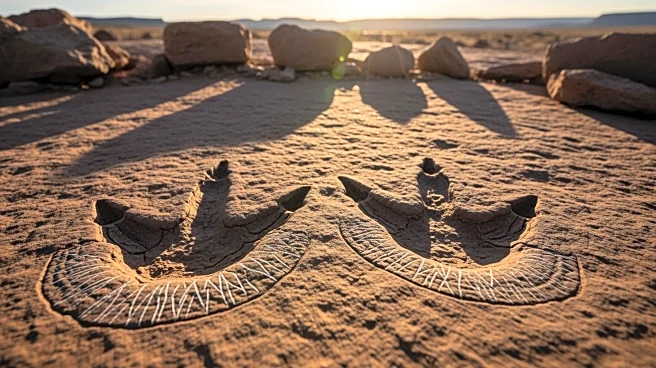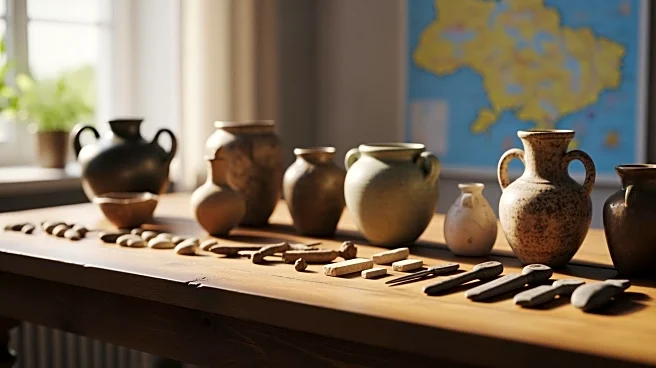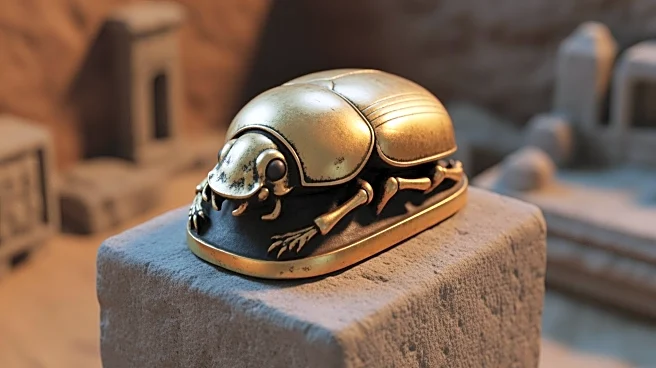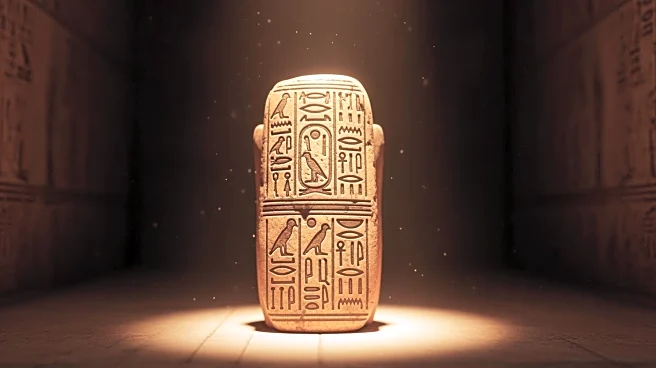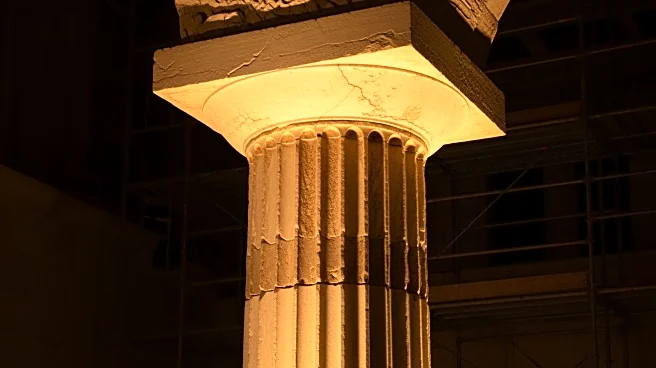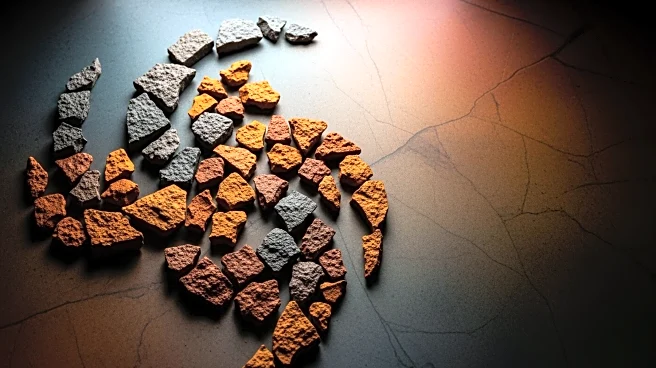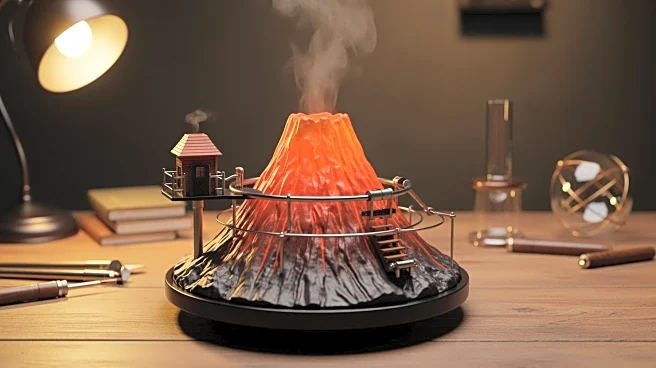What's Happening?
In Narzole, Italy, scientists have uncovered the mummified remains of a teenage boy, preserved and turned green by exposure to copper. The burial, dated between 1617 and 1834, is the most comprehensive example of copper-driven mummification known to date.
The body was found in a wooden coffin lined with copper alloy plates, which corroded over time and interacted with the organic material, slowing decay and transforming the remains into a green-hued corpse. The study, published in Science Direct, highlights how copper ions halted decomposition at a molecular level, preserving soft tissues, skin, muscle, and internal organs. This discovery challenges assumptions about natural mummification, which typically occurs in extreme climates, suggesting metal-induced preservation as a significant factor.
Why It's Important?
The discovery of copper-induced mummification expands the understanding of preservation methods beyond traditional embalming practices. It suggests that metal interactions can create a chemical barrier to decomposition, offering new insights into archaeological preservation. This finding may lead to a reassessment of past excavations where green pigmentation was dismissed as superficial corrosion, potentially revealing overlooked cases of chemical preservation. The interdisciplinary approach combining bioarchaeology, geochemistry, and forensic science underscores the importance of considering trace metals in long-term preservation, which could influence future archaeological and forensic investigations.
What's Next?
Researchers may reexamine historical excavations to identify other instances of metal-induced mummification. This could lead to new discoveries about burial practices and preservation methods in different regions and time periods. The study encourages further exploration of the role of trace metals in preservation, potentially impacting how archaeologists and forensic scientists approach similar cases. Additionally, the findings may prompt discussions on the use of metal in modern preservation techniques, influencing conservation strategies in museums and historical sites.
Beyond the Headlines
The case highlights the intersection of biology, chemistry, and material culture, demonstrating how unintentional preservation can occur through natural processes. It raises questions about the socioeconomic status of the individual, given the costly material used in the burial, and suggests unique local traditions that have since vanished. The discovery also emphasizes the value of interdisciplinary research in uncovering hidden aspects of history and preservation, potentially leading to new methodologies in archaeological and forensic studies.


